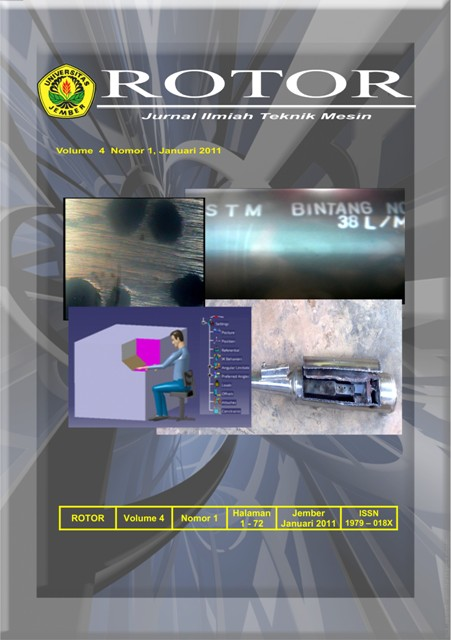ANALISA TEGANGAN-REGANGAN PRODUK TONGKAT LANSIA DENGAN MENGGUNAKAN METODE ELEMEN HINGGA
Abstract
In any design done must consider the strength of the staff. The strength that must be considered regarding the dimensions, materials, and stick structure. In the previous elderly rod product design, structural analysis found that by just using the help of software, so that the power structure of the stick product has not yet been fully elderly a top priority. This is because the previous data was found that the maximum load that can be received by elderly stick it is 45 N. It appears that the greatest stress occurs is still under the stress of the material itself permits. The voltage that occurs on the order of 6.47e +006 N/m2 located on the handle of the stick while the minimum stress acting on the order of 1.29e-008 N/m2 pipe located at the upper stalk. So the calculation needs to be done manually to review the results of previous calculations, in order to improve and enhance the strength of the product stick elderly. Finite element method is a numerical method used to solve technical problems and a symptom phisis metematis of which include stress, strain, strength, and vibration analysis. This finite element method to compare between the calculations using CATIA software and using the calculations manually. In this case the finite element method to be used is a 2D finite element method (field) is a triangular element with 3 nodes. Using Finite Element Method, the biggest stress on the element 5 with a large voltage of σx = 2.505 x 104, and the biggest strain on the element 3 with a large strain εx = 0.272. And failure obtained Theory states: Maximum Normal-Stress Theory declared safe. Because it is still within safe limits. Maximum Shear-Stress Theory declared unsafe.
Keywords: stick, stress, strain and finite element











